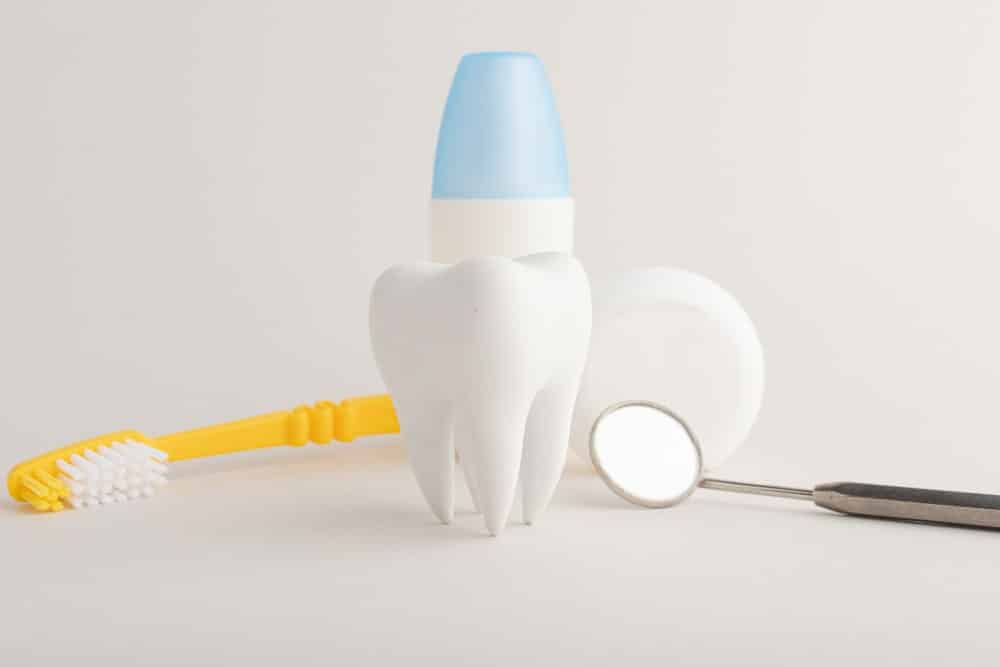What Are Tooth Extractions?

Do I Need a Tooth Extraction?
Maintaining natural teeth for life is always the intention, but sometimes, extractions are the safest and most effective way to avoid pain or further damage to the teeth and gums. Your dentist will try their best to save the tooth that has been broken or damaged with a filling, crown, or other treatment. However, there are times when the damage is beyond repair. If this is the case, the tooth needs to be extracted.
An X-ray of the area will be taken to help plan the best way to remove the tooth. During the procedure, you can expect to feel pressure, but little to no discomfort. Upon completion, your dentist will provide you with detailed instructions on what to do and expect after surgery.
After their dental extraction, patients are often given pain relievers to alleviate any discomfort they might experience as the anesthesia wears off.
When Are Tooth Extractions Necessary?
- Periodontal disease
- Extensive tooth decay
- Loose teeth
- Infected teeth
- Crowded teeth
- Oral trauma (such as a broken or fractured tooth)
- Impacted wisdom tooth

Types of Tooth Extractions
We offer two kinds of tooth extractions:
- Simple Tooth Extractions: A simple tooth extraction is performed on a tooth that is visible above the gum line. Your dentist will use a special instrument to loosen the affected tooth and slowly and gently lift it out of your mouth. Most simple extractions can be done using a local anesthetic.
- Surgical Tooth Extractions: For teeth that are damaged beyond repair or teeth such as wisdom teeth that have not yet erupted from the gum line, surgical tooth extraction is often needed. Your dentist will create an incision in your gums to reach the affected tooth and remove it. Typically, the area will need to be sutured to help with healing. Again, this procedure can be done with a local anesthetic, but we are happy to provide stronger options if desired. Comfort is our top priority.
Simply put, simple extractions involve the removal of visible teeth, often performed with just local anesthesia. Surgical extractions, also known as tooth extraction surgery, are more complex, often involving the removal of impacted teeth that may be broken or not fully erupted.
Tooth Extraction Aftercare
After your tooth has been extracted, if not replaced with a dental implant, the bone will start to recess after 6 months.
Tooth extraction procedure aftercare is essential for promoting proper healing. Immediately following the procedure, it's advisable to bite down gently on the gauze provided to control bleeding. Avoid using a straw, as this could dislodge the clot.
Stick to soft foods for the first couple of days, and avoid hot or spicy foods. Maintain oral hygiene by gently rinsing with warm salt water, but avoid vigorous swishing.

Frequently Asked Questions
What types of anaesthesia or sedation are used during a tooth extraction?
During a tooth extraction, different types of anaesthesia or sedation may be used to ensure patient comfort and manage pain. The specific choice depends on factors such as the complexity of the extraction, patient preference, and the dentist’s recommendation. Here are some common options:
Local anaesthesia: This is the most common type of anaesthesia used for tooth extractions. The dentist injects a local anaesthetic, such as lidocaine, into the area around the tooth to numb the area and block pain sensations. With local anaesthesia, you remain awake during the procedure but won’t feel any pain.
Oral sedation: Oral sedation involves taking a prescribed medication before the extraction to induce a state of relaxation and reduce anxiety. The medication is usually taken about an hour before the procedure, allowing you to feel calm and drowsy during the extraction. Although you may remain awake, the sedation helps reduce discomfort and anxiety.
The choice of anaesthesia or sedation depends on the individual patient’s needs and the dentist’s assessment. Your dentist will discuss the available options, their benefits, and any associated risks before the extraction. They will consider factors such as your medical history, anxiety level, and the complexity of the extraction to determine the most appropriate anaesthesia or sedation method for your comfort and safety.
What is the recovery process like after a tooth extraction?
The recovery process after a tooth extraction varies depending on the complexity of the extraction and individual factors. Here’s an overview of what to expect during the recovery period:
Immediately after the extraction: Your dentist will provide you with gauze to bite down on to control bleeding and promote clot formation at the extraction site. You may experience some swelling, discomfort, and residual bleeding for a few hours after the procedure.
Pain management: Your dentist may prescribe pain medication or recommend over-the-counter pain relievers to manage any discomfort. Follow the prescribed dosage instructions and take the medication as directed.
Rest and recovery: It’s important to take it easy for the first day or two after the extraction. Avoid strenuous activities, exercise, and heavy lifting to allow your body to heal properly.
Oral hygiene: Follow your dentist’s instructions for oral care after the extraction. This may include gently rinsing your mouth with salt water or a prescribed mouthwash, avoiding vigorous rinsing, and being cautious when brushing near the extraction site.
Avoid smoking and drinking through a straw: To prevent complications and promote healing, it’s best to avoid smoking and using straws for at least 24 hours after the extraction. These activities can dislodge the blood clot or cause additional bleeding.
Remember that everyone’s recovery process is unique, and healing times may vary. By following proper aftercare guidelines and seeking prompt dental attention if needed, you can ensure a smoother recovery after tooth extraction.
How long does it take for the extraction site to heal?
The healing time for an extraction site can vary depending on various factors, including the complexity of the extraction, the individual’s overall health, and how well post-operative care instructions are followed. Here’s a general timeline for the healing process:
Blood clot formation: After the extraction, a blood clot forms in the socket where the tooth was removed. This clot is crucial for proper healing and acts as a protective barrier for the underlying bone and nerves. It typically forms within the first 24 to 48 hours.
Initial healing: In the first few days after the extraction, you may experience some residual bleeding, swelling, and discomfort. The extraction site may appear red or inflamed during this time.
Soft tissue healing: Over the next one to two weeks, the gum tissue in the extraction site begins to heal. The swelling and discomfort should gradually diminish during this period.
Bone healing: Underneath the gum tissue, the underlying bone starts to heal. This process can take several weeks to months, depending on the extent of the extraction and the individual’s healing capacity.
Complete healing: The complete healing of the extraction site can take anywhere from a few weeks to several months. It’s important to note that the extraction site may continue to remodel and change over time.
During the healing period, it’s essential to follow your dentist’s post-operative instructions, maintain good oral hygiene, and attend any scheduled follow-up appointments. This ensures proper healing and reduces the risk of complications.
How soon can I replace a missing tooth after an extraction?
The timing for replacing a missing tooth after extraction can vary depending on several factors, including the specific case, the condition of the extraction site, and the recommendation of your dentist. Here are some general guidelines:
Healing period: It is crucial to allow the extraction site to heal properly before proceeding with tooth replacement. This healing period typically ranges from a few weeks to several months, depending on the individual and the complexity of the extraction. Your dentist will evaluate the healing progress and determine when moving forward with a replacement option is appropriate.
Bone and gum tissue preservation: During the healing period, the surrounding bone and gum tissue may undergo changes. Preserving the integrity of these tissues is important for ensuring a stable foundation for the replacement tooth. Your dentist will assess the quality and quantity of the remaining bone and tissue to determine the appropriate timing for replacement.
Treatment planning: Once the extraction site has healed adequately, your dentist will develop a treatment plan for replacing the missing tooth. This may involve options such as dental implants, bridges, or dentures. The specific treatment chosen will depend on factors such as the number of missing teeth, the location of the extraction site, and your overall oral health.
It is essential to consult with your dentist to determine the optimal timing for replacing a missing tooth after an extraction.
How much does a tooth extraction cost?
The cost of a tooth extraction can vary depending on several factors, including the complexity of the extraction, the location of the tooth, the dental professional performing the procedure, and the geographical location.
Keep in mind that investing in a tooth extraction is important for maintaining oral health and preventing potential complications. Delaying or avoiding necessary extractions may lead to more extensive and costly dental issues down the line. Therefore, it is advisable to prioritize your dental health and seek professional advice from your dentist regarding the specific costs associated with your tooth extraction.
